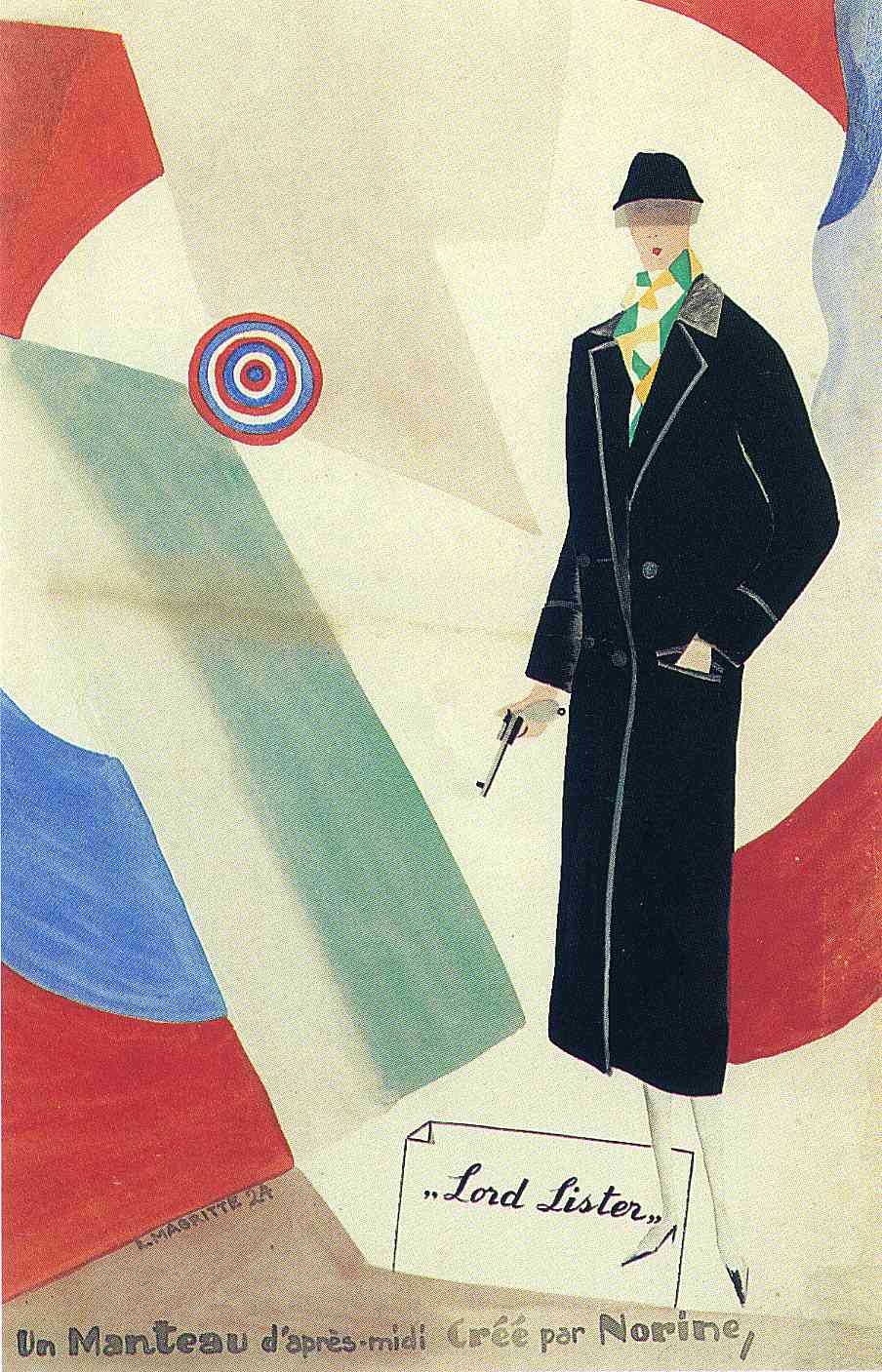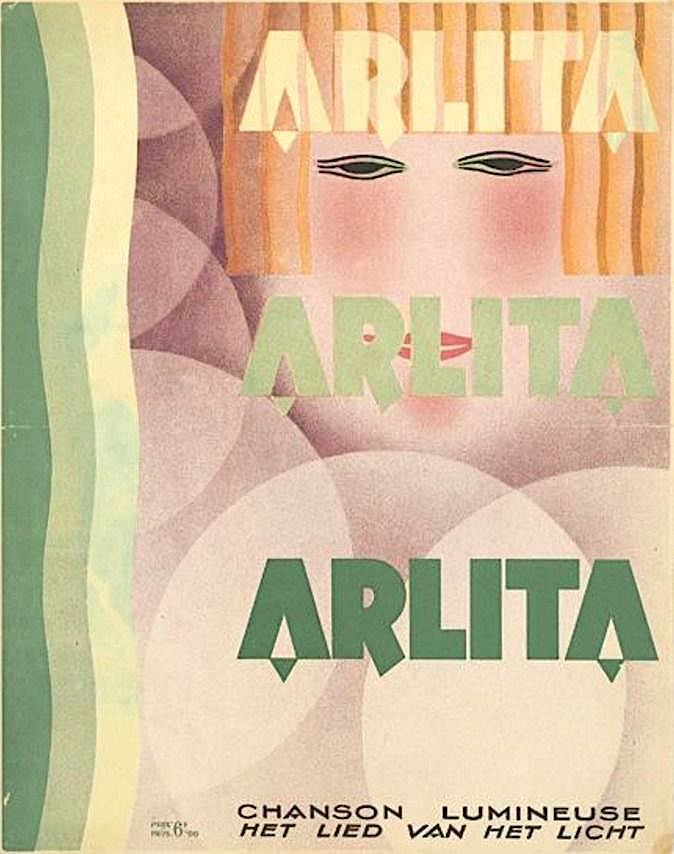
The Belgian painter René Magritte created some of the most enigmatic and iconic works in Surrealist art. But before he moved to Paris in 1927 and began forging relationships with André Breton and the Surrealists, Magritte struggled in Brussels as a freelance commercial artist, creating advertisements in the Art Deco style.
In 1924 Magritte began designing posters and advertisements for the couturier Honorine “Norine” Deschrijver and her husband Paul-Gustave Van Hecke, owners of the Belgian fashion company Norine. Van Hecke also owned art galleries, and was an early champion of surrealism. Van Hecke would eventually pay Magritte a stipend in exchange for the right to market his surrealist works. In the 1924 advertising poster above, Magritte portrays a woman in high heels pretending to be Lord Lister, the gentleman thief from German pulp fiction, wearing “an afternoon coat created by Norine.”

Magritte designed some 40 sheet music covers, most of them in the Art Deco style, according to Hrag Vartanian at Hyperallergic. The one above, “Arlita,” is from about 1925. The French and Dutch subtitles read “The Song of Light.”

The harlequin-themed image above is another advertisement for Norine, circa 1925. Magritte painted it in watercolor and gouache. The penciled inscription at the bottom reads “une robe du soir par Norine” — “an evening gown by Norine.”

In 1926 Magritte was commissioned to create the poster above for the popular singer Marie-Louise Van Emelen, better known as Primevère. For more of Magritte’s Art Deco sheet music covers, visit Hyperallergic.
Note: An earlier version of this post appeared on our site in 2013.
Would you like to support the mission of Open Culture? Please consider making a donation to our site. It’s hard to rely 100% on ads, and your contributions will help us continue providing the best free cultural and educational materials to learners everywhere.
Also consider following Open Culture on Facebook and Twitter and sharing intelligent media with your friends. Or sign up for our daily email and get a daily dose of Open Culture in your inbox.
Related Content:
Dozens of M.C. Escher Prints Now Digitized & Put Online by the Boston Public Library
Philosopher Portraits: Famous Philosophers Painted in the Style of Influential Artists
The Art of William Faulkner: Drawings from 1916-1925
Bauhaus, Modernism & Other Design Movements Explained by New Animated Video Series
René Magritte’s Early Art Deco Posters (1924-1927) is a post from: Open Culture. Follow us on Facebook, Twitter, and Google Plus, or get our Daily Email. And don't miss our big collections of Free Online Courses, Free Online Movies, Free eBooks, Free Audio Books, Free Foreign Language Lessons, and MOOCs.
from Open Culture https://ift.tt/2ZQFS8M
via Ilumina
Comments
Post a Comment